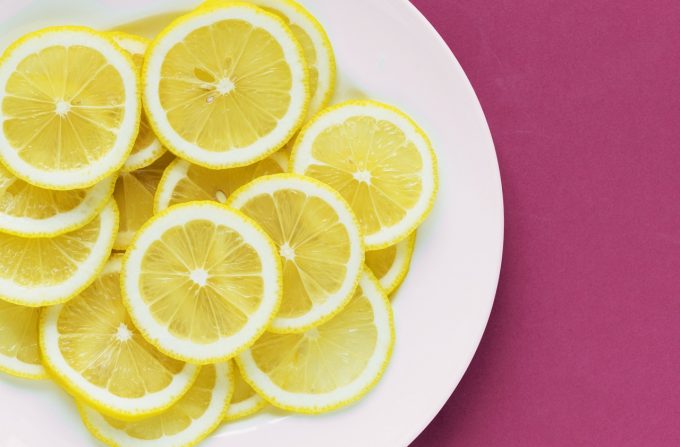On Sunday, October 2, birthday of Mahatma Gandhi and World Day for Farmed Animals, thousands of people around the world will be fasting. This Fast Against Slaughter 2016, and those of us participating will do it to stand in solidarity with the animals headed to slaughter — all the millions, and each individual being — who get no food or water during their final journey on earth, a process that takes, on average, twelve hours.
I hope that you will choose to do this or, if you’re hearing about it after the fact, that you’ll mark your calendar for October 2 next year when Farm Animal Rights Movement will once again sponsor this global event. It’s fitting for us as vegetarians and vegans to engage in this way, because the history of our movement is filled with people who used the powerful tool of fasting for political and social causes. Gandhi is well known for both his vegetarianism and his many lengthy fasts, in and out of prison; and comedian, activist, and vegan, Dick Gregory, did marathon fasts during the civil rights and VietNam War periods. I actually spent a week fasting with Mr. Gregory, the late Alevenia Fulton, ND, Gregory’s health mentor, and 120 other people back in the 1970s. The cause to which we hoped to draw attention was world hunger. We camped in the gymnasium of the Ebenezer Baptist Church in Atlanta, and were kept motivated by nightly amplified phone calls with people we admired, including Muhammad Ali and Coretta Scott King.
![[Getty Images]](https://mainstreetvegan.com/wp-content/uploads/2016/10/DickGregoryFiSZGaQw84Gm.jpg)
- If you’re going to fast for an extended period and you don’t plan to go to a fasting institute with supervision, consider juice fasting. You’ll still cleanse without the likelihood of a serious “healing crisis” that may well occur on a water fast of more than a few days. For a one-day fast, you’re probably fine with water only unless you’re diabetic (type 1 or 1), hypoglycemic, anorexic (or otherwise seriously underweight), pregnant, nursing, on prescription medication (in this case, check with your doctor), or if the thought of going without food puts you in a state of panic. In these cases, “fast in spirit” and do some physical act that reminds you of your commitment to this day — not eating between planned meals, for example, or not having second helpings, or eating only simple foods. This is also a perfect day to make a donation to FARM or some other organization that stands up for farmed animals.
- Again, to get ready for a long fast, it’s suggested that you do a time of preparation, lightening the diet to lead up to the fast — for example, omnivore to vegetarian to vegan to raw to fruit to juice, over a period of two weeks or longer. For a one-day fast, no such preparation is necessary, although it may be wise to avoid stimulating foods — hot spices, rich desserts, cheeses (vegan included) — for dinner the night before. And it’s probably best not to have tantalizing leftovers in the fridge.
- In the case of this one-day fast, decide for yourself what constitutes “one day.” While most people regard a one-day fast as a full day, i.e., three meals bypassed, it can be either 24 hours (dinner Saturday evening to dinner Sunday evening), or the standard 36 hours (dinner Saturday evening to breakfast Monday morning). If you’ve never done this before and you don’t have support (i.e., real-people friends who are doing this, too, that you can call on), opt for 24 hours. If you find yourself at dinnertime on Sunday with the willingness to go on through the night, you’re free to do that.
- Drink plenty of water. If it’s hard for you to drink plain water, using a squeeze of lemon won’t make you a “bad faster.” (On that Dick Gregory fast so long ago, I remember that Dr. Fulton added a tablespoon of lemon juice and a tablespoon of blackstrap molasses to every gallon of water. It provided the merest hint of flavor, encouraging us to drink, something especially important on a longer fast.) For only one day without food, the “quality” of the water doesn’t need to be an issue — spring water, distilled water, alkaline water, or tap water put through a filter are all fine. (I realize that the animals are deprived of both food and water, but getting dehydrated doesn’t make us heroes.)
- Take your time when you get up from a seated or lying position. Lack of food, even for a short period, can lower your blood pressure and cause dizziness upon standing.
- Breathe deeply several times a day. Air is “food” in a very basic sense. It’s also very calming if you’re someone who gets edgy without regular meals. And get some sunlight if you can.
- If you’re someone who measures your day by mealtimes and who looks forward to them with great relish, plan your day to be full so that a different rhythm, but a very workable one, is established. If there is a World Day for Farmed Animals event in your area, this is ideal since you’ll be with other fasters and other people who believe in the value of what you’re doing. Support and check-ins with others are available on the Fast for the Slaughter 2016 Facebook page, too. All in all, know yourself. You may be someone who would like to stay home all day, read, meditate, take walks and an afternoon nap, and maybe watch an inspiring movie during what would have otherwise been dinnertime. Or you may prefer to pack your day with activity. Your way is the right way.
- Accept and appreciate the gift of extra time. When you’re not thinking about what you’ll have for meals, preparing them, eating them, and cleaning up after them, your day has more time in it, time to journal, ponder, act, create, plan, contemplate, pray, or any number of other wonderful pursuits that fit your temperament and your life. Luxuriate in this time to become a more committed activist or a more peaceful person.
- When your stomach grumbles, think of the animals. You are doing something by choice, and you’ll eat again tomorrow. They are bound for execution, without so much as a last meal.
 Victoria Moran, shown here with FARM (Farm Animal Rights Movement) founder Alex Hershaft, is the author of Main Street Vegan, The Love-Powered Diet, and The Good Karma Diet, and is the newly selected “Peta’s Sexiest Vegan Over 50,” with male counterpart Joel Kahn, MD. Victoria directs Main Street Vegan Academy, an exciting 6-day intensive in NYC to train and certify Vegan Lifestyle Coaches & Educators. She hosts the Main Street Vegan Podcast; is producer of the upcoming documentary film, The Compassion Project, to introduce veganism to people of faith; and co-writer of Miss Liberty, a feature film in pre-production about a cow who escapes a slaughterhouse. Victoria is the mother of a vegan daughter, stunt performer and aerialist Adair Moran. Follow Victoria on Twitter at @Victoria_Moran; on Facebook at Main Street Vegan; and on YouTube at Victoria Moran NYC. Join the Fast Against Slaughter 2016 event here on Facebook.
Victoria Moran, shown here with FARM (Farm Animal Rights Movement) founder Alex Hershaft, is the author of Main Street Vegan, The Love-Powered Diet, and The Good Karma Diet, and is the newly selected “Peta’s Sexiest Vegan Over 50,” with male counterpart Joel Kahn, MD. Victoria directs Main Street Vegan Academy, an exciting 6-day intensive in NYC to train and certify Vegan Lifestyle Coaches & Educators. She hosts the Main Street Vegan Podcast; is producer of the upcoming documentary film, The Compassion Project, to introduce veganism to people of faith; and co-writer of Miss Liberty, a feature film in pre-production about a cow who escapes a slaughterhouse. Victoria is the mother of a vegan daughter, stunt performer and aerialist Adair Moran. Follow Victoria on Twitter at @Victoria_Moran; on Facebook at Main Street Vegan; and on YouTube at Victoria Moran NYC. Join the Fast Against Slaughter 2016 event here on Facebook.




Thank you. Very helpful. I am fasting with fresh green juice and water today.